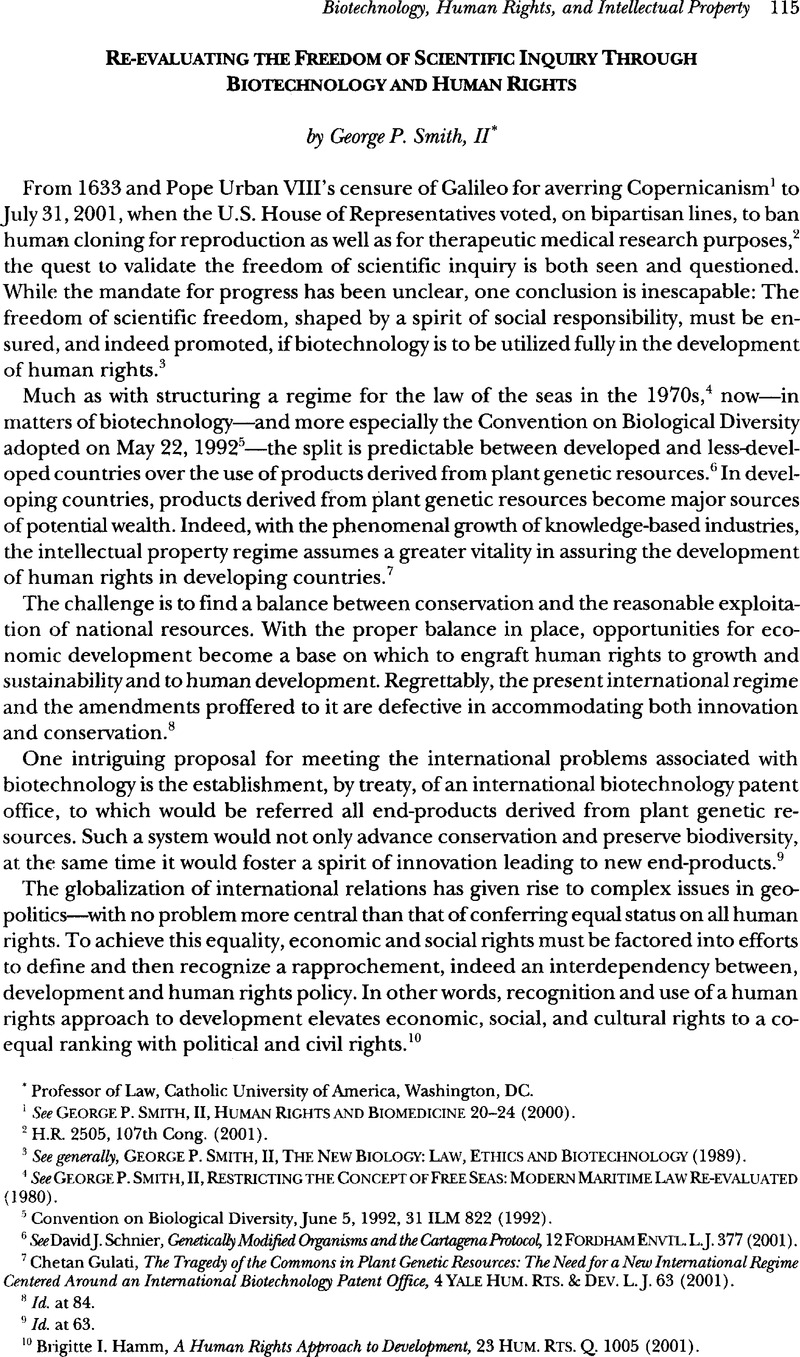No CrossRef data available.
Published online by Cambridge University Press: 28 February 2017

1 See George P. Smith, II, Human Rights and Bigmedicine 20-24 (2000).
2 H.R. 2505, 107th Cong. (2001).
3 See generally, George P. Smith, II, the New Biology: Law, Ethics and Biotechnology (1989).
4 See George P. Smith, II, Restricting the Concept of Free Seas: Modern Maritime Law Re-Evaluated; 1980).
5 Convention on Biological Diversity, June 5, 1992, 31 ILM 822 (1992).
6 See Schnier, David J., Genetically Modified Organisms and the Cartagena Protocol, 12 Fordham Envtl. L.J. 377 (2001)Google Scholar.
7 Gulati, Chetan, The Tragedy of the Commons in Plant Genetic Resources: The Need for a New International Regime Centered Around an International Biotechnology Patent office, 4 Yale Hum. Rts. & Dev. L. J. 63 (2001)Google Scholar.
8 Id. at 84.
9 Id. at 63.
10 Hamm, Brigitte I., A Human Rights Approach to Development, 23 Hum. Rts. Q. 1005 (2001)CrossRefGoogle Scholar.
11 George J. Annas, Some Choice: Law, Medicine and the Market 257 (1998).
12 Id.
13 Id.
14 Id. at 257. See also Smith, George P. II, Setting Limits: Medical Technology and the Law, 23 Sydney L. Rev. 283 (2001)Google Scholar; Smith, George P. II, Judicial Decisionmaking in the Age of Biotechnology, 13 Notre Dame J.L. Ethics & Pub. Poly 93 (1999)Google Scholar.